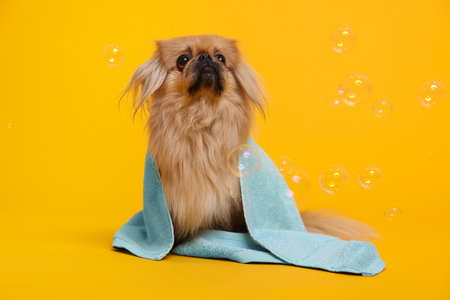1. Why Hydration Matters for Small Pets
Water is essential for life, and this holds true for small pets such as hamsters, guinea pigs, rabbits, and other pocket-sized companions. Proper hydration is vital for maintaining their overall health, supporting bodily functions like digestion, temperature regulation, and waste elimination. Even slight dehydration can quickly lead to serious health issues in small animals due to their size and fast metabolism. In the wild, these pets often obtain moisture from fresh foods and natural water sources, but in a home environment, it’s up to pet owners to ensure they always have access to clean, fresh water. Recognizing the importance of hydration helps prevent common problems like urinary tract infections, kidney stones, and digestive troubles, all of which can be avoided with proper water intake. Ultimately, understanding why hydration matters lays the foundation for keeping your small pet happy, active, and healthy every day.
2. How Much Water Do Small Pets Really Need?
When it comes to keeping small pets healthy, understanding their unique hydration requirements is crucial. The amount of water a pet needs each day varies widely depending on species, size, age, activity level, and even environmental conditions. Unlike dogs or cats, small pets like hamsters, guinea pigs, rabbits, and ferrets have different metabolic rates and dietary needs that directly influence how much water they should consume daily.
Typical Daily Water Requirements
| Pet Type | Average Weight | Daily Water Intake |
|---|---|---|
| Hamster | 4 oz (113 g) | 0.3 – 0.5 oz (10-15 ml) |
| Guinea Pig | 1.5 – 2.5 lbs (700-1,100 g) | 3.4 – 6.8 oz (100-200 ml) |
| Rabbit | 4 – 6 lbs (1.8-2.7 kg) | 7 – 10 oz (200-300 ml) |
| Ferret | 1.5 – 4 lbs (700 g-1.8 kg) | 2.7 – 6.8 oz (80-200 ml) |
Factors That Influence Water Needs
- Diet: Pets eating mostly dry pellets or seeds require more water than those with moisture-rich foods like fresh vegetables.
- Environment: Warm or dry climates can increase a pets need for water, while cool environments may decrease it.
- Activity Level: Active pets burn more energy and lose more fluids, especially during playtime outside the cage.
- Age and Health: Young, pregnant, nursing, or sick pets typically need more fluids to stay healthy.
The Takeaway
No matter what kind of small pet you have, providing fresh and clean water daily is essential for their well-being. Monitoring their intake and understanding the factors that affect their hydration needs can help prevent health issues before they arise.

3. Signs of Dehydration: What to Watch For
Recognizing the early signs of dehydration in small pets is crucial for their health and well-being. Unlike larger animals, small pets such as hamsters, guinea pigs, rabbits, and gerbils can become dehydrated quickly—sometimes within just a few hours—due to their fast metabolism and small body size. Common symptoms that may indicate your pet isnt getting enough water include lethargy, dry or sunken eyes, loss of skin elasticity, decreased appetite, thick or sticky saliva, and unusual breathing patterns. You might also notice that their fur appears dull or rough, and they could develop constipation or produce less urine than usual. Timely action is essential because even mild dehydration can rapidly progress to more severe health issues, including organ failure. If you observe any of these warning signs, its important to provide fresh water immediately and consult your veterinarian for further advice. Monitoring your pet’s hydration status daily helps prevent complications and ensures they stay happy and healthy.
4. Tips to Encourage Healthy Hydration
Keeping small pets properly hydrated can be challenging, but with a few practical strategies, pet owners can ensure their furry friends are getting enough water each day. Here are some helpful tips and tricks to promote healthy hydration for your small animals:
Water Bottle Hacks
- Check Water Bottles Daily: Make sure the bottle is working correctly and not clogged. Test by tapping the ball bearing and watching for a steady drip.
- Positioning: Place the bottle at a comfortable height so your pet doesn’t have to stretch or crouch awkwardly to drink.
- Multiple Bottles: For cages with more than one pet, provide extra bottles to reduce competition and ensure everyone has access to water.
- Fresh Water: Change out the water at least once a day to keep it clean and free of debris.
Diet Considerations
- Incorporate Moist Foods: Fresh vegetables like cucumber, lettuce, or bell peppers can boost hydration, but always introduce new foods gradually and check for toxicity specific to your pet species.
- Avoid Excess Treats: Salty or dry treats can make pets thirstier but won’t replace the need for fresh water.
Hydration Monitoring Table
| Pet Type | Daily Water Needs (Approx.) | Suggested Moist Foods |
|---|---|---|
| Hamster | 10-15 ml | Cucumber, Apple (seedless), Carrot |
| Guinea Pig | 80-100 ml | Lettuce, Bell Pepper, Zucchini |
| Rabbit | 100-150 ml per kg body weight | Bok Choy, Romaine Lettuce, Celery |
Troubleshooting Dehydration Signs
- If your small pet appears lethargic, has sunken eyes, or produces less urine or droppings than usual, dehydration may be an issue. In these cases, consult a veterinarian immediately.
The Bottom Line
By taking simple steps—like keeping water bottles clean, offering hydrating foods, and monitoring daily intake—you can help your small pets stay healthy and happy all year round.
5. When to Call the Vet
Even with your best efforts, there may be times when your small pet’s hydration needs more than just fresh water and attentive care. So how do you know when it’s time to seek professional help? If your pet is refusing water, showing signs of lethargy, has dry or tacky gums, sunken eyes, or isn’t urinating as usual, these could be red flags that dehydration is becoming a medical emergency.
Recognizing Warning Signs
Small pets like rabbits, guinea pigs, hamsters, and ferrets can deteriorate quickly if their hydration levels drop too low. Watch for any sudden changes in drinking habits or if your pet seems weak or confused. Diarrhea, vomiting, or excessive drooling are also causes for concern and should not be ignored.
When Home Care Isn’t Enough
If you’ve tried offering fresh water and encouraging your pet to drink with their favorite veggies or treats and they’re still not interested, it’s time to call the vet. Don’t attempt to force-feed water without guidance; improper techniques can lead to aspiration or other complications.
What Your Vet Will Do
Your veterinarian may perform a physical exam and recommend fluids either orally or through subcutaneous injections depending on the severity of dehydration. They’ll also try to determine the underlying cause—whether it’s an infection, dental problem, or something else—and create a treatment plan tailored for your pet’s unique needs.
Remember, early intervention is key. If you’re ever unsure about your small pet’s hydration status or overall health, reaching out to a trusted vet can make all the difference between a quick recovery and a serious health crisis.
6. Conclusion: Making Water a Priority
Ensuring your small pet stays properly hydrated is one of the most important responsibilities you have as a pet owner. Water supports every vital function in your pet’s body, from regulating temperature to aiding digestion and flushing out toxins. Even mild dehydration can lead to serious health issues, especially for small pets whose bodies are more sensitive to changes in hydration levels. By making water a priority in your daily pet care routine, you help set the foundation for a long, healthy life.
Simple Steps to Keep Your Pet Hydrated
- Always provide fresh, clean water: Change your pet’s water at least once a day and wash the bowl regularly to prevent bacteria build-up.
- Monitor their drinking habits: Pay attention to how much water your pet consumes and watch for signs of dehydration such as lethargy, dry gums, or decreased appetite.
- Offer water-rich foods: If your small pet’s diet allows, supplement with vegetables or fruits that have high moisture content.
- Keep water accessible: Place water bowls in easy-to-reach locations so your pet never has trouble finding a drink.
Be Proactive About Hydration
Remember, every pet is unique. Factors like age, health status, activity level, and environment can all affect how much water your small animal needs each day. When in doubt, consult with your veterinarian for personalized advice. By staying informed and attentive, you’ll help ensure your furry friend enjoys optimal health and happiness—one sip at a time.


